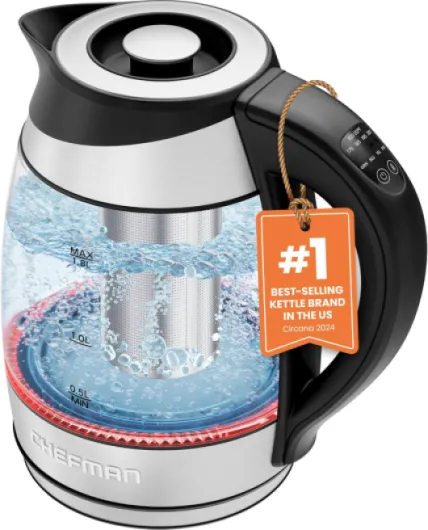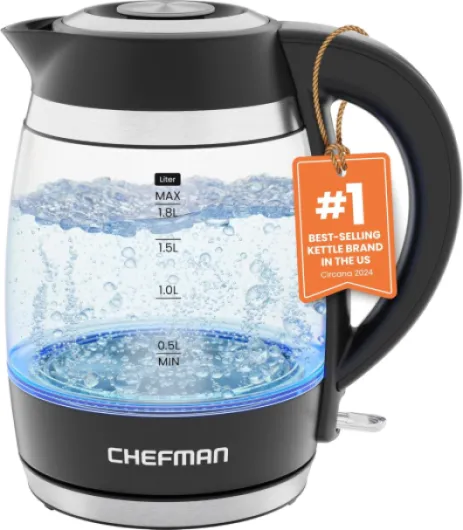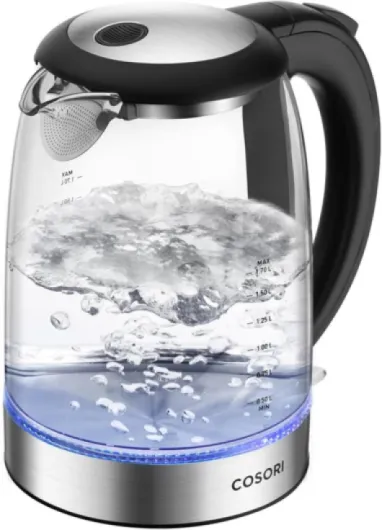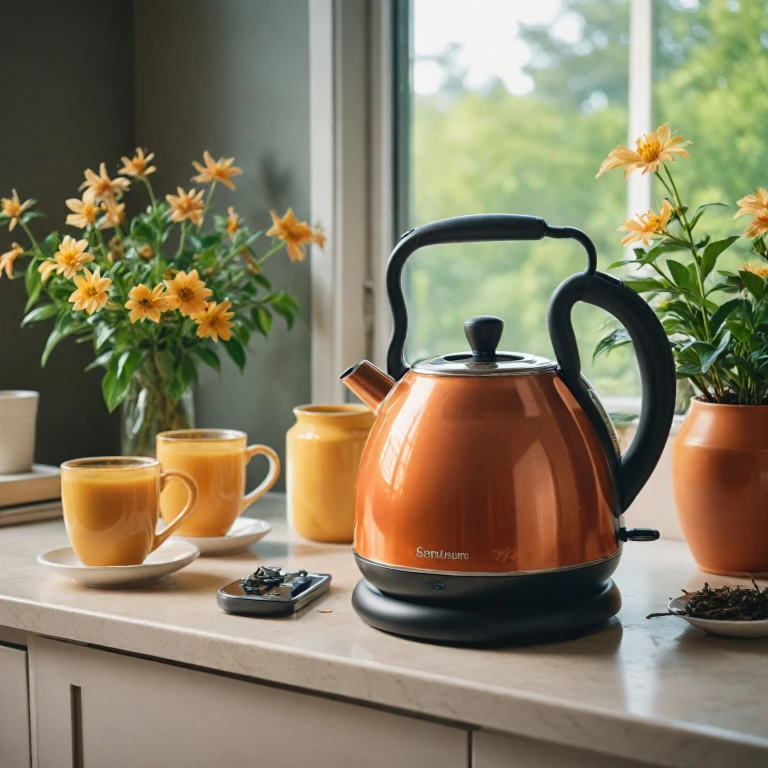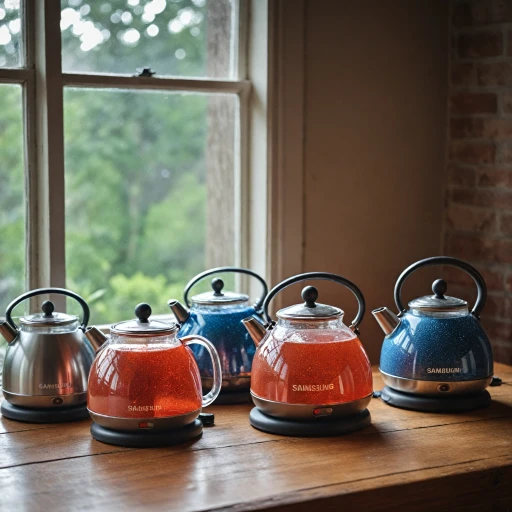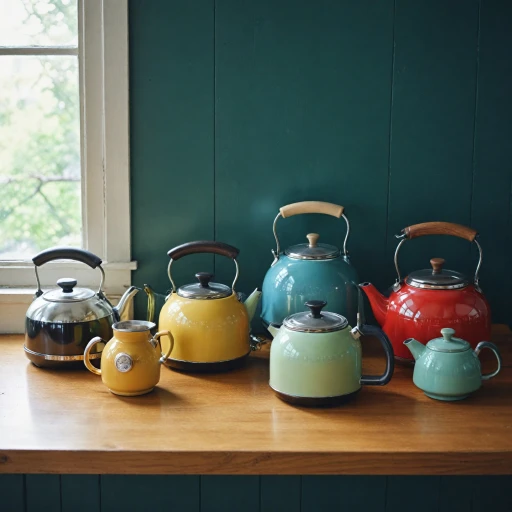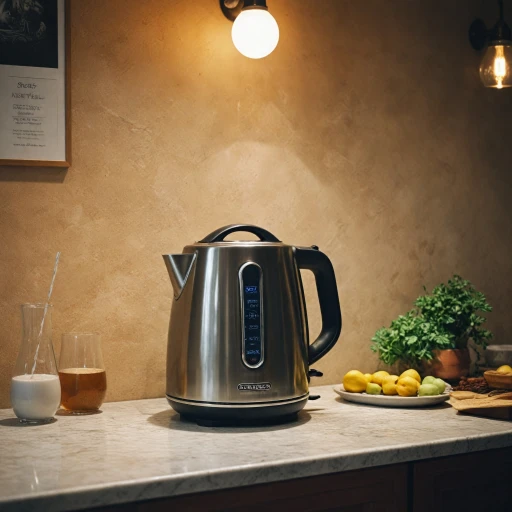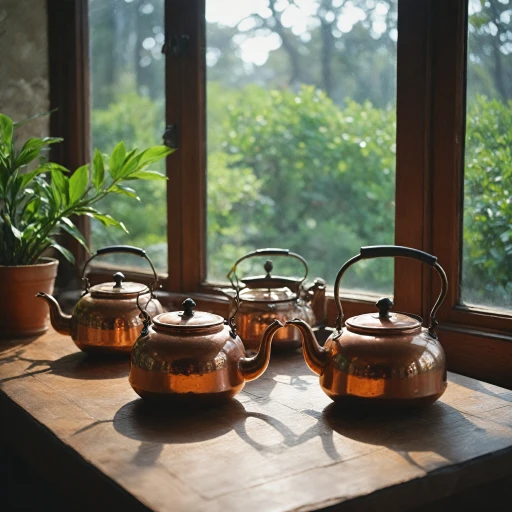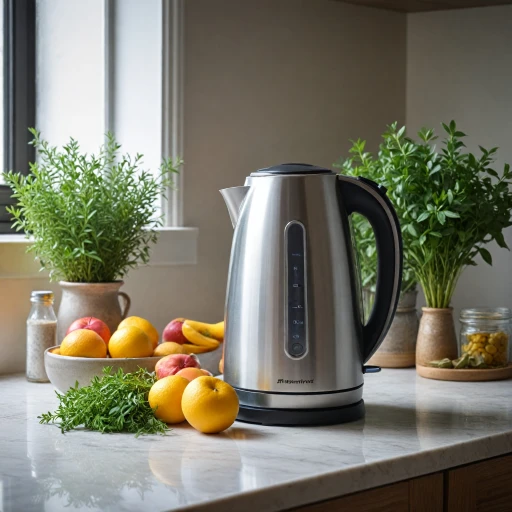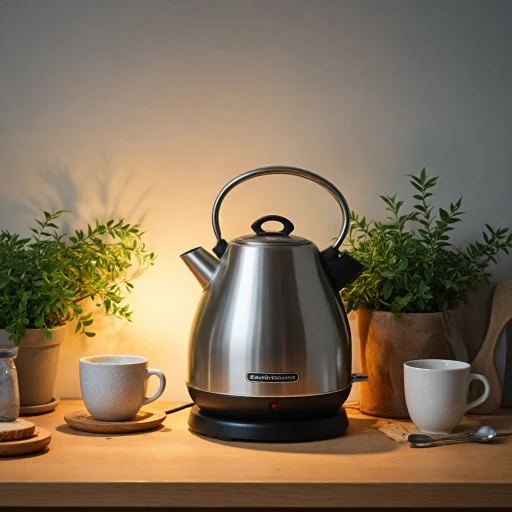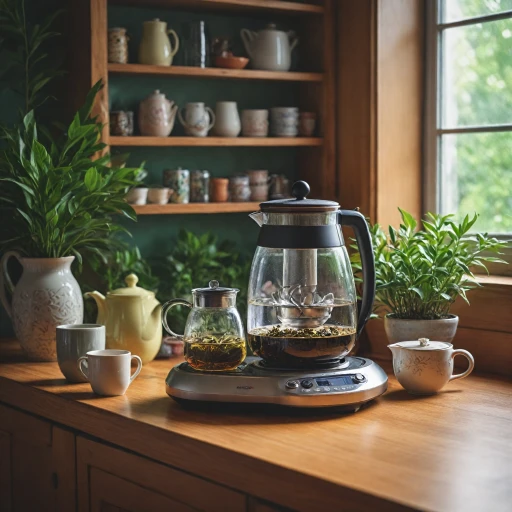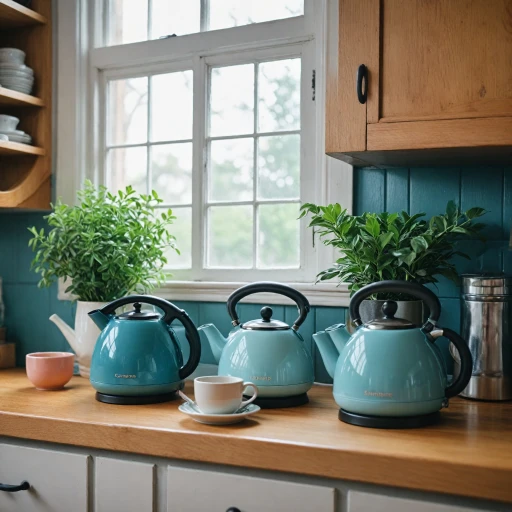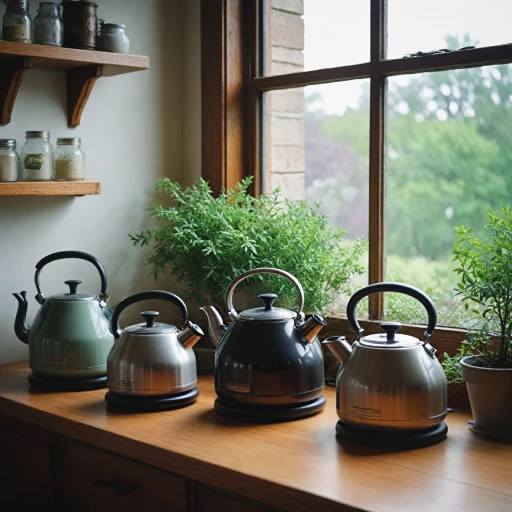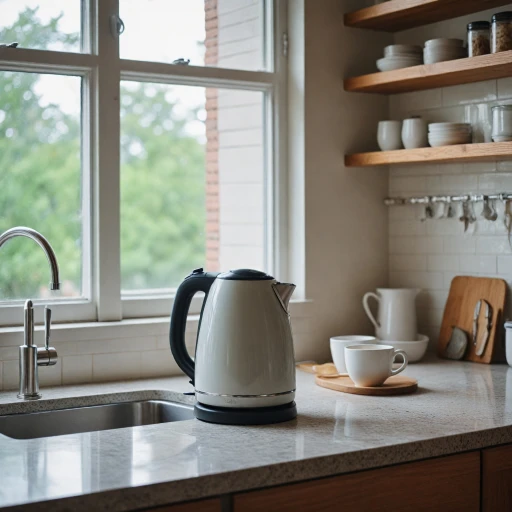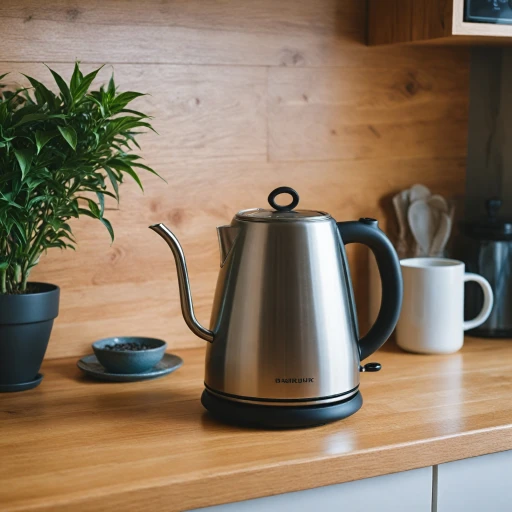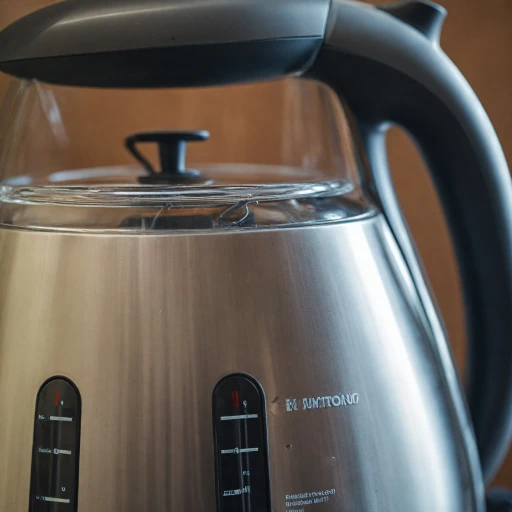
Understanding Materials: Safe Choices for Electric Kettles
When it comes to selecting the best electric kettle for your tea, understanding the materials used in its construction is paramount for ensuring safety and non-toxicity. Electric kettles are commonly available in a variety of materials, each with its own benefits and potential drawbacks.
Stainless Steel Kettles
Stainless steel is one of the most preferred materials for electric kettles due to its durability and resistance to rust and corrosion. A stainless steel tea kettle can efficiently boil water without impacting the taste, and it's generally considered one of the safest options—free from chemicals that may leach into your tea. This material retains heat well, ensuring your boiling water stays hot for longer periods.
Glass Kettles
Glass tea kettles, particularly those made from borosilicate glass, are praised for being non-toxic and eco-friendly. They make it easy to monitor boiling water levels and temperature, offering an appealing aesthetic to your kitchen. However, glass is more prone to breaking compared to metal counterparts, which makes it crucial to handle with care.
Ceramic and Cast Iron Kettles
Ceramic kettles provide a distinctive look and are generally safe as they do not leach chemicals into the water. Cast iron, on the other hand, is known for its excellent heat retention but is heavier and requires more careful maintenance to prevent rust. Although not as common in electric models, they remain a choice for those seeking traditional aesthetics.
Plastic Kettles: A Cautionary Note
While plastic electric kettles can be lighter and more affordable, they might not be the best choice when considering toxicity. Concerns about harmful chemicals, such as BPA, leaching into the water at high temperatures have been raised. Opting for BPA-free plastic is crucial if you prefer this material. Nonetheless, exploring other materials might yield a safer option.
To ensure you've made a safe selection, it's vital to assess the kettle's construction, liner material, and ability to handle high temperatures without releasing harmful chemicals into the water. For more insights on choosing a safe and healthy electric kettle, follow this guide on electric kettle materials.
The Importance of BPA-Free Kettles
Why BPA-Free Matters
As we brew our favorite teas, ensuring safety is paramount. The presence of BPA (Bisphenol A) in plastic materials has raised concerns due to its potential health risks. Studies suggest that BPA can seep into food and beverages, particularly when exposed to heat, posing a risk of chemical exposure. Thus, selecting BPA-free materials in electric kettles becomes not just a recommendation but a necessity for those keen on avoiding toxic tea experiences.
The Role of Materials
While BPA-free labels are crucial, understanding which materials ensure the highest safety when boiling water is also vital. Stainless steel and borosilicate glass are top choices for their resistance to chemical leaching and durability. With no coatings that may include harmful chemicals, these materials are often considered the best in crafting high-quality, non-toxic kettles. Ceramic teapots can also be safer choices when designed without toxic glazes.
Impact of Temperature on Plastics
Boiling water in any appliance may be safe, but plastics often pose challenges. Even when labeled "BPA-free," not all plastics perform equally under high temperatures. This consideration reinforces the preference for stainless steel and glass which remain stable, ensuring your electric kettle is devoid of potential chemical releases when heating.
In the journey to find the best non-toxic tea kettles, emphasizing materials and BPA-free standards ensures a healthier, safer tea-making process. Explore these options when selecting your next kettle for a genuinely tea-safe experience.
Features to Look for in a Non-Toxic Electric Kettle
Smart Features to Enhance Your Brewing Experience
When searching for a non-toxic electric kettle, selecting the right features can enhance not just the safety but also the usability of your tea brewing process. Here, we explore the essential features that can make a significant difference in choosing an electric tea kettle that is both safe and efficient.
Materials That Matter
Understanding the materials used in electric kettles is crucial, as toxic chemicals can leach into boiling water if you're not careful. Choose kettles made from stainless steel, glass such as borosilicate glass, or ceramic materials. These options are generally preferable over plastic, which can contain harmful chemicals. A stainless steel electric kettle, for instance, is prized not only for its durability but for being largely free of toxic chemicals. Additionally, ceramic and glass tea kettles are considered among the best for preventing the leaching of toxins. For further insights on material safety, explore more about safe and healthy electric kettle materials.
Temperature Control: For the Perfect Brew
The ability to control water temperature is an important feature that can impact the quality of your tea. Different teas require different boiling temperatures for the best taste. A kettle with temperature control allows you to boil water to the precise degree needed for various types of tea, enhancing flavor. Many high-quality kettles now include adjustable temperature settings or preset options for specific types of tea, making the brewing process more precise and reducing the chance of over-boiling your water.
Safety First: No More Burning or Spillage
Safety features should always be a priority in your choice of electric kettle. Look for kettles with an automatic shut-off feature, which turns off the kettle once the water has reached boiling point or a predetermined temperature. This not only prevents over-boiling but also reduces the risk of accidents. Other safety precautions include boil-dry protection, which turns off the kettle if there's no water inside, preventing burning or damage to the kettle. For some of the safest and eco-friendly electric kettles, this feature is essential.
Eco-Friendly and Aesthetic Designs
While functionality and safety are paramount, the aesthetic design and eco-friendliness of an electric kettle can enhance the appeal of your kitchen setup. Options range from sleek stainless steel finishes to classic ceramic styles or even stylish borosilicate glass designs, which can complement various kitchen decors. Furthermore, some electric kettles focus on eco-friendly production, minimizing the carbon footprint and promoting sustainable living choices. Consider brands that emphasize eco-friendly practices if this aligns with your values.
Comparing Popular Non-Toxic Electric Kettle Brands
Evaluating Top Non-Toxic Electric Kettle Brands
In the quest to find the safest electric kettle for your tea, it's important to compare leading brands known for their non-toxic offerings. This comparison highlights the best materials, eco-friendly credentials, and features that cater to those seeking plastic-free and high-quality options.
- Stainless Steel Kettles: Brands offering stainless steel kettles are highly respected for their durability and non-toxic properties. Stainless steel minimizes the risk of chemicals leaching into your boiling water, ensuring a clean brew every time.
- Glass Kettles: Borosilicate glass kettles are favored for both their aesthetic and safe boiling experience. These kettles often allow you to see the water boiling, ensuring a seamless and enjoyable tea-making process.
- Ceramic and Cast Iron Options: While ceramic and cast iron aren't as common for electric kettles, there are excellent brands that provide these options for a traditional yet efficient electric kettle, free from plastic materials.
When selecting the best toxic-free option, consider these factors:
- Boiling Time: Look for brands with quick boiling capabilities without compromising safety standards.
- Temperature Control: Adjustable temperature settings can be essential for tea enthusiasts seeking perfect brews.
- Price Range: While the price varies among brands, consider budget-friendly options that do not fall short on the quality or safety front.
- Heavy Metals Testing: Ensure the kettle you choose has been tested and certified to be free from heavy metals.
For those prioritizing eco-friendly choices, some brands are committed to minimizing environmental impact through sustainable practices, offering peace of mind that goes beyond a mere purchase.
Maintaining Your Non-Toxic Electric Kettle
Keeping Your Electric Kettle in Top Shape
Maintaining your non-toxic electric kettle is essential to ensure it continues to function safely and efficiently. Whether your kettle is made from stainless steel, borosilicate glass, or ceramic, regular care can prevent the buildup of harmful chemicals and extend its lifespan.
Regular Cleaning Practices
To keep your kettle free from toxic residues, it’s important to clean it regularly. For stainless steel and glass tea kettles, use a mixture of water and vinegar to descale the interior. This helps remove any mineral deposits that can affect the taste of your tea. Simply fill the kettle with equal parts water and vinegar, bring it to a boil, and let it sit for about 20 minutes before rinsing thoroughly.
Inspect for Wear and Tear
Regularly inspect your kettle for any signs of wear, especially if it has plastic components. Although BPA-free plastics are safer, it’s best to ensure they are not degrading over time. Check the lid and handle for any cracks or discoloration, which might indicate the need for a replacement.
Safe Boiling Practices
When boiling water, make sure not to overfill your kettle. This prevents water from spilling over and potentially damaging the heating element. Additionally, using filtered water can reduce the buildup of minerals, keeping your kettle in better condition.
Storage Tips
After each use, allow your kettle to cool down before storing it. This helps prevent damage to the materials and ensures your kettle remains in the best condition. If you have a ceramic or glass tea kettle, handle it with care to avoid any accidental breakage.
By following these maintenance tips, you can ensure your non-toxic electric kettle remains a safe and reliable tool for your daily tea brewing needs.
Budget-Friendly Non-Toxic Electric Kettle Options
Affordable Options Without Compromise
Finding a non-toxic electric kettle that meets safety standards and suits your budget can feel daunting. However, several budget-friendly options offer the quality and safety you need without breaking the bank.
When shopping for a budget-friendly electric kettle, prioritize kettles made from safe materials like stainless steel or borosilicate glass. Both materials are free from harmful chemicals and provide excellent heat resistance. Ceramic options are also available for those who prefer something different.
Avoid plastic components when possible as they might contain plastics containing hazardous chemicals which can leach into your boiling water. Stick to options that specifically mention being plastic-free and BPA-free for peace of mind.
Many budget-friendly kettles still come with essential features such as automatic shut-off and boil-dry protection. While you might not find advanced temperature controls in every lower-priced model, these basic features ensure safe operation and protect your kettle's longevity.
For example, look for simple stainless steel tea kettles or glass tea kettles with minimalist designs. They might lack some frills but remain entirely functional and safe for your daily tea ritual.
Remember, even high quality doesn’t always equate to the best or safest option for your needs. Be mindful of labels and product descriptions to pinpoint the safest toxic-free kettles within your budget. Great Jones, a term associated with positive consumer praise, can be a useful reference point when reading reviews.
If you’re open to exploring various types of kettles, don’t overlook the efficiency and eco-friendly nature of cast iron or ceramic options. While they might cost slightly more upfront, their durability and classic appeal offer long-term savings.
